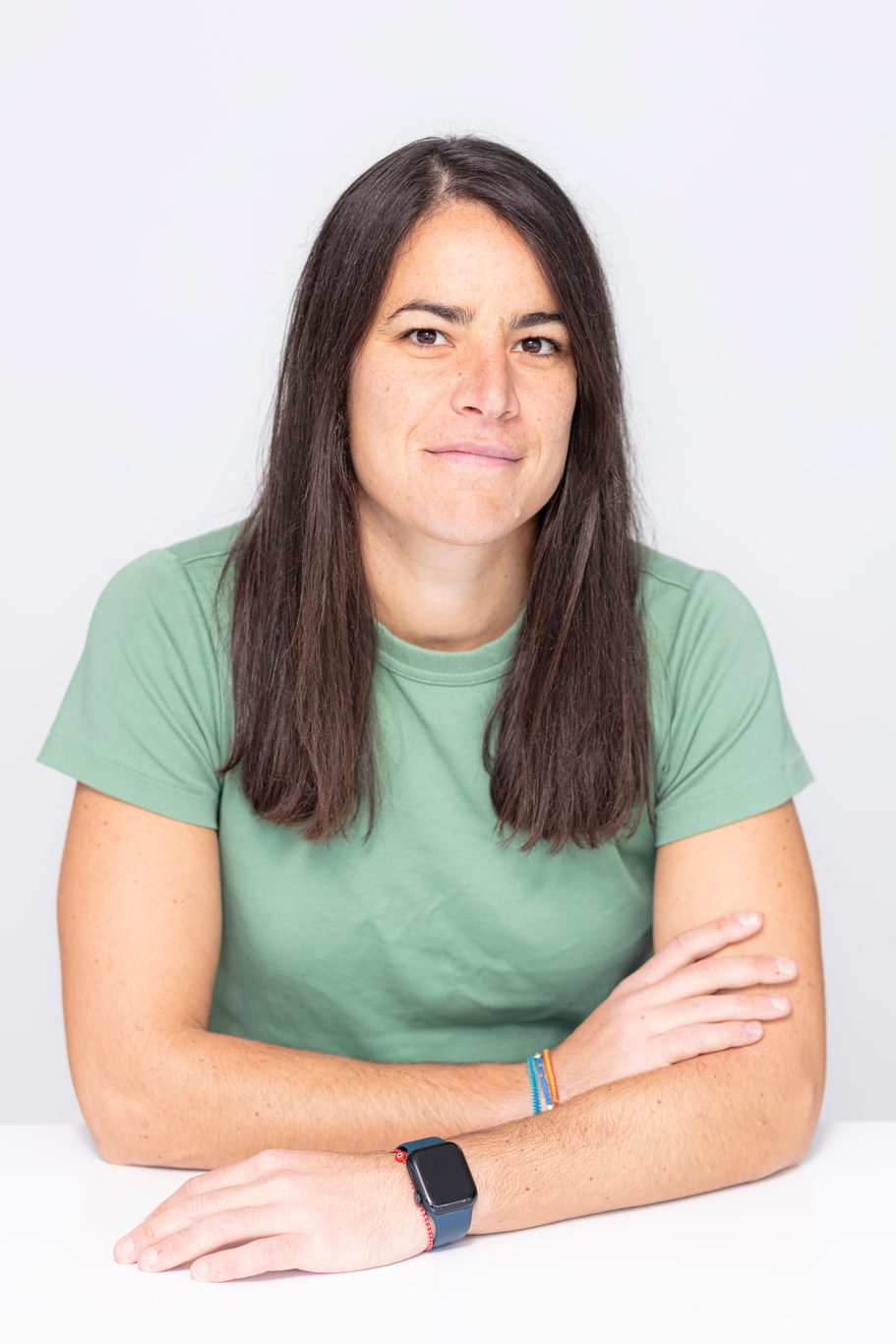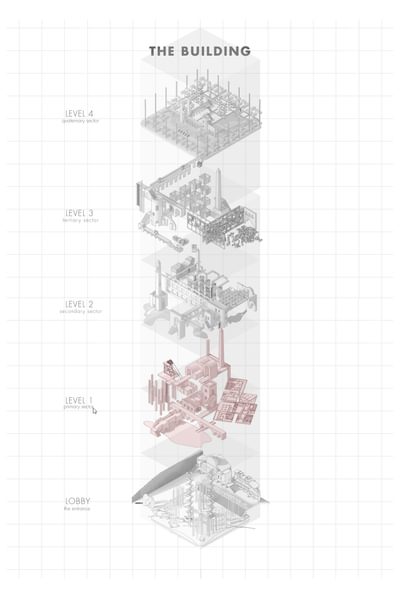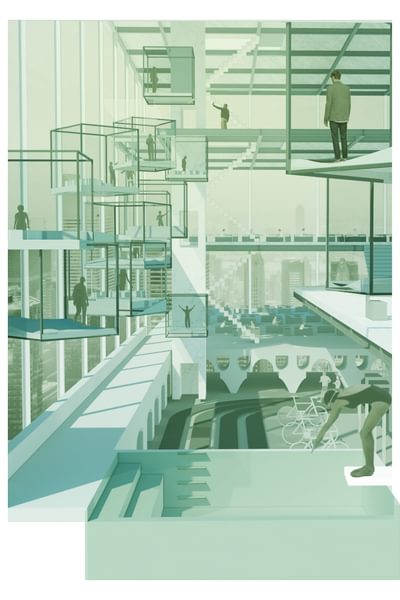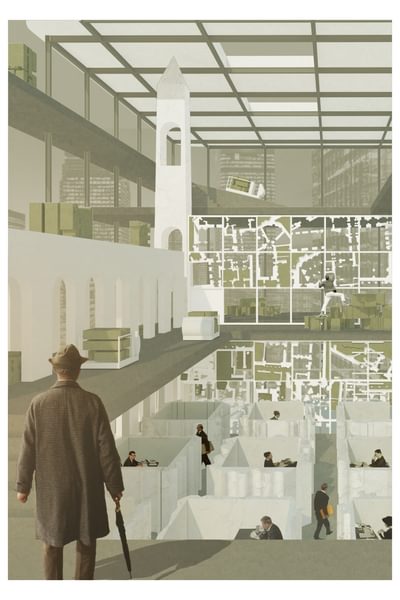
People Profile: Stella Papaspyrou – From tennis champion to urban designer
With a background as unique as her design perspective, Stella Papaspyrou’s journey into architecture has been anything but conventional.
Born in Volos, Greece, and raised on the competitive tennis circuit, Stella spent 15 years playing internationally before shifting her focus from the court to the city. A childhood fascination with movement, form, and human interaction with space eventually led her to study Architecture and Engineering in Athens, followed by a postgraduate degree in Urban Design at The Bartlett in London.
Today, as a key member of Chapman Taylor’s London studio, she is helping shape some of Azerbaijan’s most ambitious urban regeneration projects—bringing a deep sensitivity to place, culture and community. In this People Profile, Stella reflects on her early influences, design philosophy, and the projects that inspire her.
Can you tell me a bit about your early life & career?
I was born in Volos, Greece, the youngest in a family of five, and from an early age, tennis became my first true passion. I played competitively at international level for 15 years, a journey that allowed me to travel, connect with people and places, and develop a strong sense of spatial awareness by constantly observing how people move through spaces and how patterns emerge — instincts that somehow define me to this day as a person and an architect.
My passion for architecture sparked at 15, when a model-making class opened my eyes to how shapes, forms, and voids come together to create meaningful spaces. A year later, after returning from a summer at a tennis academy in Spain, I made the pivotal decision to pursue architecture over tennis. At 18, I moved to Athens to study Architecture and Engineering at the National Technical University of Athens, where I completed both my bachelor’s and master’s degrees.
After graduating, I worked for three years in a small architectural practice in Athens, gaining hands-on experience across all project stages. Wanting to deepen my understanding of cities and public spaces, I moved to London in 2016 to complete a post-master’s degree in Urban Design and Architecture at The Bartlett School of Architecture, UCL. Since then, I’ve worked on masterplanning and large-scale urban projects, first at another London practice for 3 years and since April 2021 at Chapman Taylor, where I continue to explore the intersection between design, context, and the evolving urban landscape.
What insights from your early career did you bring to Chapman Taylor?
I have always been driven by creativity, and every step of my academic and professional career has redefined what architecture means to me.
During my university years in hectic Athens, I learned to see beauty in chaos — how symmetry can emerge from anarchy and how people ultimately shape a place. I began to understand architecture not just as form and aesthetics, but as the delicate balance of elements coexisting within the built environment.
Later, moving to London and studying at The Bartlett was a transformative step. Returning to academia after three years, in a new city and system, challenged me to rethink urban design. It opened up fresh ways to connect the built and natural worlds, and in my final thesis, I explored the future of work by creating a video game where players navigated utopian post-work landscapes — a project that pushed me to experiment with entirely new creative tools and ideas.
On the other hand, working in a small architectural practice for three years allowed me to grow not just as a designer but as a well-rounded professional. With close mentorship, direct client interaction, and the freedom to explore creative solutions, I’ve gained confidence, adaptability, and a deep understanding of how thoughtful design and the business of architecture come together to shape meaningful spaces.
Finally, my first London practice gave me my first deep dive into masterplanning, especially on ambitious projects and competitions across Saudi Arabia, the UAE, and Egypt. It taught me how to balance bold design ideas with cultural sensitivity and real-world constraints, pushing me to grow quickly as both an architect and urban designer. It was a time of intense learning, where I strengthened not just my design skills but also my ability to collaborate, adapt, and think strategically on large, complex projects shaping the future of fast-evolving regions.
What elements of design are particularly important to you?
Over the years, my journey in architecture and masterplanning has been one of continuous discovery. What began as a curiosity about forms and patterns evolved into a deeper understanding of how architecture interacts with urban landscapes, natural environments, and—most importantly—people.
Architecture is fundamentally about the stories, communities, and cultures that give life to a place.
It’s about placemaking.
Working in Azerbaijan for the past four years, particularly on the Shusha Masterplan project and more recently on Jabrayil, has profoundly shaped this approach. For me, the most vital elements of design are a strong sense of place, community and heritage. I view architecture as an experiential, living environment where open spaces and built forms flow together in harmony.
Enthusiasm fuels my work every day. It’s this dedication that drives me to create meaningful, thoughtful spaces that respect heritage, embrace sustainability, and serve communities. Sustainability isn’t just a buzzword—it’s a vital part of how I envision the future of architecture, ensuring our designs are responsible and resilient.
As architects, we draw inspiration from our own experiences of places and strive to create environments that evoke emotion and foster genuine human connection. My ambition is to help our clients transform their cities into better, more vibrant versions of themselves—places that attract people, generate opportunities, and strengthen community life.
Ultimately, I believe that great architecture balances cultural sensitivity and human experience with commercial viability. When these elements come together, we create projects that do more than exist on paper—they truly live and breathe with the people who use them.
What interesting projects you are you currently working on?
At Chapman Taylor, I’ve had the opportunity to be part of some truly transformative projects across Azerbaijan, each rooted in a different context but united by a shared ambition — to restore, reimagine, and reshape cities with meaning and purpose.
It all began with the Shusha Masterplan, a project close to my heart. Shusha is a historic city, and our task was to bring it back to life in a way that respected its past while looking to the future. We worked with the existing street patterns and introduced twelve distinct districts to accommodate a population of 25,000. The architecture drew on local materials and vernacular forms, aiming to revive the spirit of the place.
Soon after came Jabrayil Masterplan — a project focused on the regeneration of a city. The approach here was about more than physical reconstruction; it was about rebuilding identity, reconnecting communities, and laying the groundwork for a strong local economy supported by green infrastructure and cultural anchors.
In parallel, I worked on two smaller but equally dynamic projects — Aghdam District 3 and Fuzuli Residential — both set within existing masterplans and delivered in a competition format. These challenged us to create bold, mixed-use neighbourhood visions that balanced commercial viability with liveability and resilience.
What’s the future direction for you and Chapman Taylor/what are you excited about?
Looking ahead, I’m excited about strengthening our client relationships in Azerbaijan and building a robust portfolio that not only secures more projects there but also helps us expand into new markets. I’m committed to pushing for meaningful, sustainable design and embracing new technologies and tools to deliver the highest quality for our clients. On a personal level, I’m eager to keep building a strong, communicative team, and continue my leadership roles on similar large-scale projects in the future.
Shortly, I’ll be making a work trip to Azerbaijan — something I’m truly looking forward to — walking the sites we are designing. And beyond my professional journey, I’m also excited to continue developing as an architect and urban designer, to keep travelling and broadening my perspectives, and, of course, to keep competing in tennis — the passion that has shaped me since childhood.
In the end, I believe that both architecture and life are about growth, curiosity, and connection — and I’m excited for everything that lies ahead.










